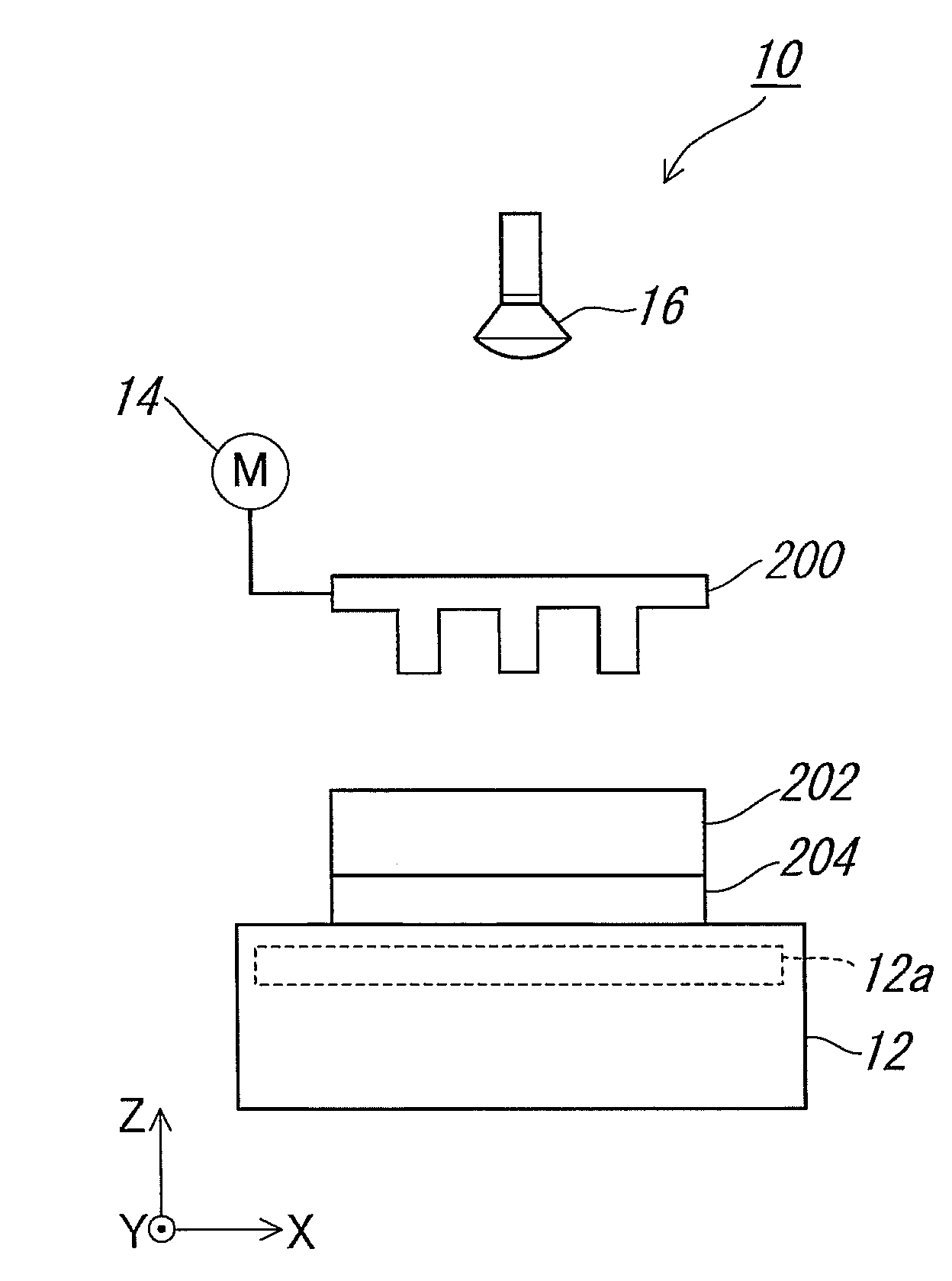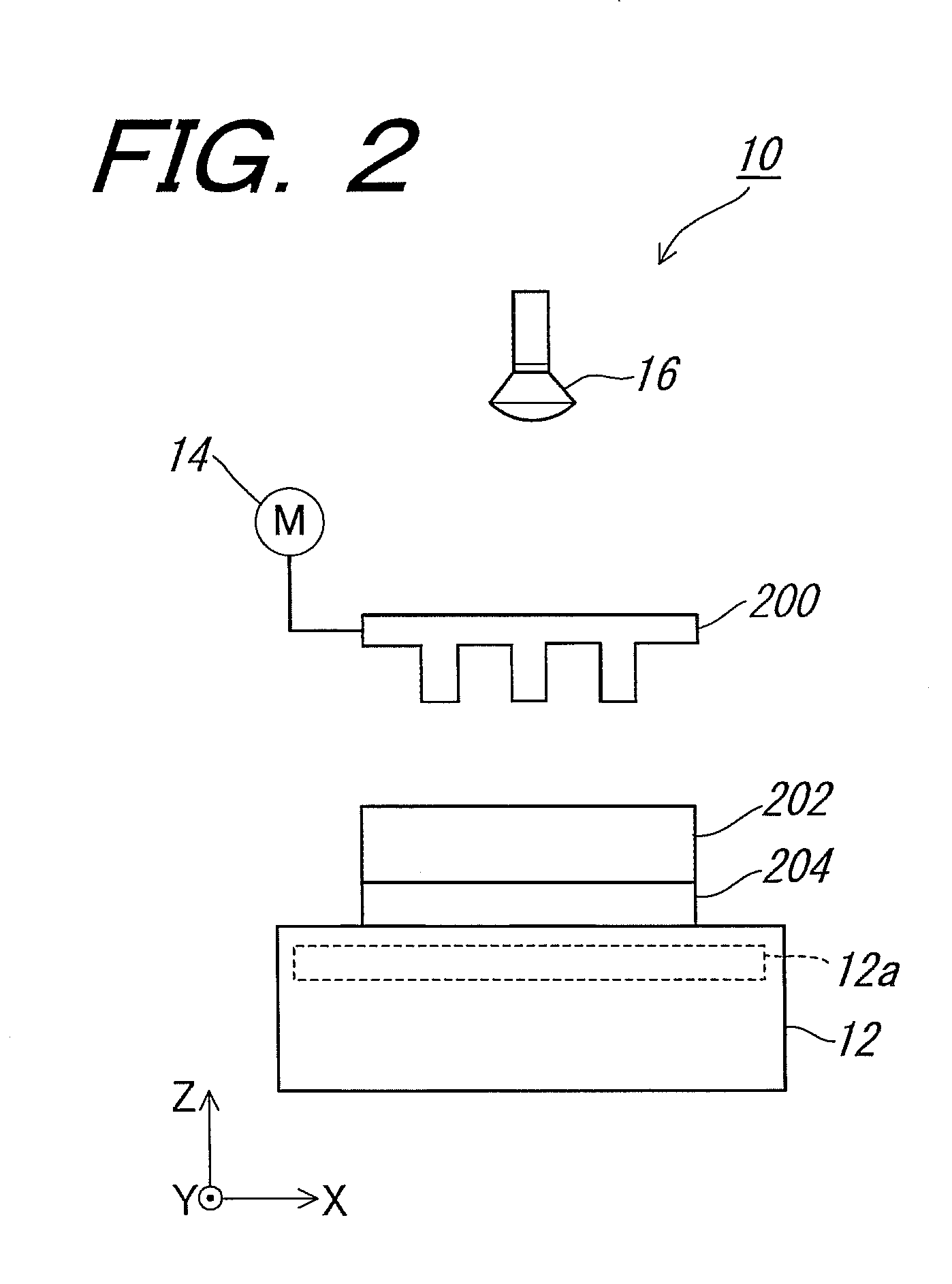Method of forming fine pattern
- Summary
- Abstract
- Description
- Claims
- Application Information
AI Technical Summary
Benefits of technology
Problems solved by technology
Method used
Image
Examples
first embodiment
[0070]First, the first embodiment of the method of forming a fine pattern according to the invention will be described. In the case that the first embodiment of the method of forming a fine pattern according to the invention is conducted, for example, a nanoimprint apparatus 10 as shown in FIG. 2 is used for pressing a mold against a patterning material.
[0071]First, the nanoimprint apparatus 10 will be described. The nanoimprint apparatus 10 is provided with a sample holder 12 and adapted to be capable of placing a substrate 204 on the surface of the sample holder 12 wherein a patterning material 202 made from polysilane has been formed on the upper surface of substrate 204. A heater 12a is housed in the sample holder 12.
[0072]On one hand, a mold 200 on the under surface of which a fine structure with recesses / protrusions is formed is provided with a stepping motor 14 by which the mold 200 is driven movably along Y-Z directions.
[0073]Moreover, a superhigh pressure mercury lamp 16 fo...
second embodiment
[0123]Next, the second embodiment of the method of fine-pattern formation of the invention will be described wherein the detailed description of the same or equal constitutions, functions, and treatment contents with or to those of the first embodiment of the method of fine-pattern formation of the invention as described above will be optionally omitted by indicating or applying the same terms or reference characters as that of the first embodiment.
[0124]The method of fine-pattern formation according to the second embodiment of the invention differs from that of the first embodiment in the following points.
[0125]Namely, it is arranged in the first embodiment in such that the mold 200 is irradiated with ultraviolet from the side of the mold 200 to transmit the mold 200, and then the patterning material 202 is irradiated with the ultraviolet during the series of treatment steps, or that the substrate 204 on which the patterning material 202 is to be formed is made from a material such...
PUM
| Property | Measurement | Unit |
|---|---|---|
| Temperature | aaaaa | aaaaa |
| Pressure | aaaaa | aaaaa |
Abstract
Description
Claims
Application Information
 Login to View More
Login to View More - R&D
- Intellectual Property
- Life Sciences
- Materials
- Tech Scout
- Unparalleled Data Quality
- Higher Quality Content
- 60% Fewer Hallucinations
Browse by: Latest US Patents, China's latest patents, Technical Efficacy Thesaurus, Application Domain, Technology Topic, Popular Technical Reports.
© 2025 PatSnap. All rights reserved.Legal|Privacy policy|Modern Slavery Act Transparency Statement|Sitemap|About US| Contact US: help@patsnap.com



